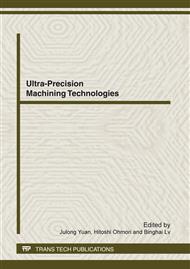p.35
p.41
p.46
p.56
p.61
p.68
p.73
p.78
p.83
Research on the Surface Roughness Predictive Model of Austempered Ductile Iron Based on Genetic Algorithm
Abstract:
As a search algorithm for optimization based on the mechanics of natural selection and genetics, Genetic Algorithm (GA) has been widely used for solving optimization problems in various fields. According to the present manufacture situation of Austempered Ductile Iron (ADI), three samples with different quenching temperature were prepared and their mechanical properties were tested. The ceramic cutter CC6050 were used in the precise dry cutting experiment and 2205 profilometer was used to measure the surface roughness of the workpieces. The predictive models of the surface roughness during the dry finishing process were established based on Genetic Algorithm, then the results were compared with those gotten by multiple regressions, and the relationship between the surface roughness and the quenching temperature was analyzed. the cutting speed and the feed rate has greater impact on the surface roughness among the three cutting parameters, and the obtained surface roughness was larger as the quenching temperature increased.
Info:
Periodical:
Pages:
61-67
Citation:
Online since:
April 2012
Authors:
Price:
Сopyright:
© 2012 Trans Tech Publications Ltd. All Rights Reserved
Share:
Citation:


